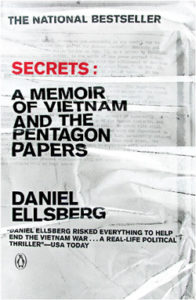[Referenced in Chapter 2 of The Doomsday Machine]
The 1958 Taiwan Straits Crisis (Quemoy Study)
by Morton Halperin, 1966 (unredacted version)
Draft Notes on the Taiwan Straits / Offshore Islands Crisis (Quemoy Study)
by Daniel Ellsberg (Feb. 1963)
PACAF Report on Taiwan Quemoy Operation
by Daniel Ellsberg (1963)
From Daniel Ellsberg:
I consulted with my friend Morton Halperin when he began the research for this study, I believe, in 1963. Having participated myself in the Cuban Missile Crisis a few months earlier, I spent most of 1963 and the first half of 1964 doing research on nuclear crises at the RAND corporation in Santa Monica, California, for which Halperin was a consultant. When I joined the Defense Department as a full time employee in August 1964, as special assistant to the assistant secretary of defence for international security affairs (ISA), my purpose was really to pursue my investigation of this subject, in the hopes of reducing the chance of nuclear war in the future. When Halperin completed his study at the end of 1966, my Draft Notes on the Offshore Islands Crisis of 1963 were a product of my consultation with Halperin in February 1963. In the mid ’60s, the crisis over Quemoy and Matsu, Offshore Islands in the Taiwan Strait—which is variously described as the Offshore Islands (OSI) Crisis, the Quemoy Crisis, or in the title of Halperin’s study “The 1958 Taiwan Straits Crisis”—was not generally perceived as having been a nuclear crisis, despite the fears expressed publicly by politicians and commentators that it could possibly have erupted into nuclear war. What Halperin discovered in his classified (Top Secret) study was that the nuclear dimensions of this confrontation were taken very seriously by the Eisenhower administration, and in particular the military advisers and commanders involved. Indeed, Christian Herter, who succeeded John Foster Dulles as Secretary of State, was reported to have said later, “The Cuban Missile Crisis is often described as the first serious nuclear crisis; those of us who lived through the Quemoy crisis definitely regarded that as the first serious nuclear crisis.” The reasons for this will be obvious every few pages of this study.

